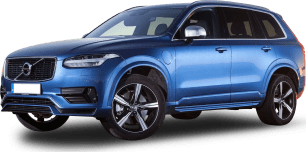Like much of the Forester STI, the driving experience is heavily borrowed from some tried and true Subaru characteristics.
That naturally aspirated flat-four engine, though underwhelming on paper, gets the job done without much fuss. In fact, it sometimes feels peppier than it should given its outputs.
Its 'S/I' (Sport or Intelligent) drive mode selector is there to adjust acceleration style, but it doesn’t make an enormous difference.
Yes, it could do with more torque, but the engine doesn’t struggle and only starts to sound laboured at high revs during the kind of acceleration you’d need for seconds at a time.
The sound of a CVT whirring away isn’t exactly auditory bliss, nor does it make for engaging acceleration.
But it’s relatively quiet under regular load below highway speed and, as long as the road isn’t too coarse, NVH is generally good in the Forester.
Road, wind and engine noise are certainly present in certain circumstances, but they’re not intrusive until you get to higher speeds.
At those high speeds is where you might notice one of the most significant changes to the STI version of the Forester - the dampers have been retuned by STI, for what Subaru hopes is a “sharper, more responsive driving experience”.
It’s hard to seriously call the Forester sharp - it’s a mid-size family SUV with enough clearance to go light off-roading - but the STI Sport holds up well for what it is.
The Forester driving experience was already likeable and easy, and in terms of cornering and handling bumpy rural (or even just bumpy urban) roads, the suspension keeps things under control without feeling too stiff.
Its body doesn’t roll as much as you might expect when cornering, but given STI’s engineers focused their efforts on the dampers, its a good thing the Forester doesn’t either waft or thud when presented with big sharp bumps, nor does it vibrate and rattle over constant rough surfaces.
Of course, it’s also got 'X Mode' controls for different surfaces like snow, dirt and mud, making it a pretty handy companion for outdoor adventuring or camping trips in regions where the weather gets a bit unpredictable. If you’ve ever tried to get a front-wheel drive hatchback out of a muddy hillside campsite…
Essentially, the Forester is the kind of SUV that, if you wanted to, you could have a medium amount of fun with on a twisty road before taking it down a particularly rough, unsealed or muddy trail, then later hand the keys to your grandma knowing she’d be able to handle everything about the driving experience, too.

